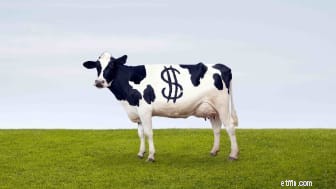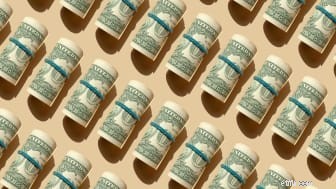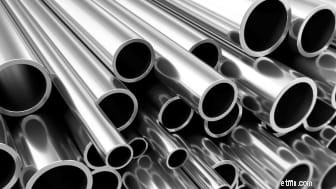
Биржевые фонды (ETF) - это швейцарский армейский нож инвестирования. Вы можете делать с ними все что угодно:создавать ядро портфеля, использовать тактические методы защиты, делать первые шаги или даже получать прибыль, когда рынок падает. И мы помнили все эти и другие цели, когда составляли список из 22 лучших ETF для покупки на 2022 год.
Привет. Если 2020 и 2021 год научили всех нас чему-то, так это тому, что нам нужно быть готовыми.
Для ясности:лучшие ETF на 2022 год, как и в списке за предыдущий год, действительно включают в себя оптимистичные фонды, предназначенные для использования в своих интересах различных тенденций, которые аналитики и стратеги Уолл-стрит видят в развитии в предстоящем году. Это касается как акций, облигаций, так и сырьевых товаров.
Но в то время как мы с вами можем придавать какое-то значение произвольным календарным датам, таким как 1 января и 31 декабря, рынки, конечно же, этого не делают. Вот почему мы также обычно включаем несколько универсальных фондов, которые будут столь же подходящими в 2022 году, как и в 2012 или 2032 годах. Мы также стараемся предоставить инвесторам пару огнетушителей - защитные варианты, которые вы можете использовать только тогда, когда Грозовые тучи опускаются на Уолл-стрит.
Итак, что говорит хрустальный шар о 2022 году? Множество стратегов прогнозируют умеренный рост однозначных цифр:Goldman Sachs заявляет, что S&P 500 вырастет до 5100. РБК сообщает, что 5050, как и LPL Financial в середине их диапазона - и Личные финансы Киплингера С ними согласна исполнительный редактор Энн Кейтс Смит. «Подумайте, где-то немного выше 5050 для S&P 500 или к северу от 39000 для промышленного индекса Доу-Джонса», - говорит она в нашем прогнозе на 2022 год. (В настоящее время индекс S&P 500 составляет 4649 пунктов.)
Однако Уолл-стрит не является единодушным оптимистом. BofA призывает к небольшому снижению до 4600 к концу 2022 года, в то время как Morgan Stanley полагает, что мы будем ниже на целые 5%, до 4400.
И, естественно, никто не ожидает, что производительность будет прямой, и при этом они не ожидают, что каждый сектор будет вносить равный вклад в эти прибыли или убытки. Ценностный и циклический секторы снова являются популярными призывами к 2022 году, хотя аналитики немного обеспокоены тем, что вариант omicron COVID станет еще одним препятствием на пути к восстановлению.
Вот 22 лучших ETF для покупки на 2022 год . Если это похоже на выстрел из дробовика выбора, это нарочно. Инвесторы могут преследовать широкий спектр целей в будущем году - каждый из этих выборов ETF представляет собой первоклассный способ их достижения. Важно отметить, что это не предложение создать портфель из всех 22 вариантов, но мы уверены, что для каждого типа инвестора есть как минимум пара фондов. Так что читайте дальше и узнайте, какие хорошо построенные ETF лучше всего подходят для того, что вы пытаетесь достичь в 2022 году.
Данные по состоянию на 21 декабря. Дивидендная доходность представляет собой 12-месячную доходность, которая является стандартной мерой для фондов акций.

Мы начнем рассмотрение лучших ETF 2022 года с фонда, который, вероятно, хорошо известен большинству читателей: Vanguard S&P 500 ETF . (VOO, 425,69 долл. США). И вы можете поспорить, что в обозримом будущем мы будем лидировать с индексным фондом S&P 500 в каждом годовом списке.
В конце концов, их сверстники просто не успевают.
Каждый год мы внимательно следим за годовым отчетом S&P Dow Jones Indices по активно управляемым фондам, хотя он выглядит как побитый рекорд. Из последнего отчета за апрель по итогам 2020 года:
"[Активно управляемые] фонды с большой капитализацией начали расти там, где они остановились в предыдущем десятилетии - 11-й год подряд большинство (60%) отставали от S&P 500".
Если бы это был американский футбол, мы бы задались вопросом, действительно ли это вообще соперничество.
Но подумайте об этом:в течение 11 лет подряд большинство опытных профессионалов - экспертов, которым хорошо платят и которым хорошо платят за выбор акций для своих клиентов, - которые продают смешанные продукты с большой капитализацией, не могут превзойти эталон. Итак, каковы именно шансы вашего среднестатистического инвестора, у которого, возможно, есть час в неделю, который можно посвятить обзору своего портфеля, опередить индекс?
Более того, индексные фонды S&P 500 даже опережают другие стратегии с крупными индексами. Всего за пару недель до 2021 года VOO превзошел 80% конкурентов в своей категории Morningstar и получил полные пять из пяти звезд в рейтинговой системе Morningstar.
Что касается самого продукта:ETF Vanguard S&P 500 предлагает вам доступ к 500 компаниям с головными офисами в США, торгующим на основных американских фондовых биржах. Когда кто-то говорит «рынок», они обычно имеют в виду S&P 500.
Просто помните:это не идеально сбалансированный фонд, который дает вам равные возможности для каждого из 11 секторов рынка. На данный момент акции технологического сектора составляют около 30% активов фонда; сравните это с коммунальными услугами, недвижимостью, материалами и энергией, на каждую из которых приходится менее 3%. Также стоит отметить, что индекс S&P 500 развивается вместе с американской экономикой - в конце августа энергетика и технологии были равны по влиянию на индекс.
А поскольку индекс S&P 500 взвешен по рыночной капитализации, более крупные компании также значат больше для его результатов. Только Apple (AAPL) и Microsoft (MSFT) составляют 13% активов VOO. На долю нижних 50 активов приходится чуть более 1%. Это означает, что вы подвергаетесь определенному риску, если инвесторы «уходят» из особо крупных компаний, таких как Apple, Microsoft, Amazon.com (AMZN) или Tesla (TSLA).
Однако даже с этими рисками инвесторы давно преуспели, вкладывая средства в индекс - и при 0,03% годовых расходов нет более дешевого способа сделать это. Вот почему VOO входит в число наших 22 лучших ETF для покупки на 2022 год.
Узнайте больше о VOO на сайте поставщика Vanguard.

Еще одно «соперничество», которое было довольно однобоким на протяжении более десяти лет, - это преобладание роста над стоимостью, включая то, что кажется еще одной победой для роста в 2021 году. Но второй год подряд значительное число стратегов призывают к возрождению. в акциях по заниженной цене.
«Ранее, в 2021 году, акции компаний, привязанных к экономическому циклу - в широком смысле классифицируемые как стоимостные акции - начали опережать акции компаний роста, которые доминировали во время пандемии, так как спрос на технологии резко вырос. Эта сделка развернулась после того, как вариант Дельты поставил под сомнение восстановление», - сказал он. говорит Мэтт Перон, директор по исследованиям Janus Henderson. «Но если ВВП продолжит расти, как мы ожидаем в 2022 году (невзирая на краткосрочные спады), а процентные ставки будут расти, то секторы, ориентированные на добавленную стоимость, такие как финансы, промышленность, материалы и энергия, могут снова взять на себя инициативу».
Вот почему среди множества фондов, которые фактически называют себя «ценными» фондами, мы выбрали Vanguard High Dividend Yield ETF . (VYM, 109,20 долл. США), чтобы представить стоимость акций с большой капитализацией среди наших лучших ETF на 2022 год.
VYM Vanguard преследует довольно простую цель:инвестировать в компании с доходностью выше среднего. И он оправдывает свое название, предлагая текущую доходность 2,8%, что более чем в два раза превышает нынешний показатель S&P 500.
Но при этом ETF с высокой дивидендной доходностью Vanguard также имеет более высокие, чем в среднем по категории, риски в трех из вышеупомянутых стоимостных секторов в 2022 году:финансовые услуги (23%), энергетика (8%) и материалы (4%). Четвертый - промышленные предприятия с 10% активов - всего на два процентных пункта ниже нормы категории.
Перон добавляет, что в периоды ужесточения денежно-кредитной политики, например, того, что ожидается от Федеральной резервной системы в этом году, «инвесторы часто становятся чувствительными к оценке, что может повысить привлекательность ценных бумаг в ближайшем будущем». Это тоже будет хорошей новостью для портфеля VYM, который дешевле, чем его аналоги, как по соотношению цены к прибыли (P / E), так и по соотношению цены и денежного потока.
Узнайте больше о VYM на сайте поставщика Vanguard.

Хотя наши лучшие ETF на 2022 год сильно отличаются от выпуска 2021 года, осталось несколько избранных фондов - и ни один фонд не имел большей устойчивости в нашем годовом списке, чем Distillate U.S. Fundamental Stability &Value ETF (DSTL, 44,75 доллара США)
Частично это потому, что DSTL работает по-другому. И еще потому, что дает результаты.
Многие стоимостные ETF полагаются на такие показатели, как P / E, отношение цены к продажам (P / S) и отношение цены к книге (P / B), чтобы определить, что выглядит заниженным. Но фонд Distillate фокусируется на свободном денежном потоке (FCF, денежная прибыль, оставшаяся после того, как компания осуществила какие-либо капитальные затраты, необходимые для поддержания бизнеса), деленное на стоимость предприятия (EV, другой способ измерения размера компании, который начинается с рыночной капитализации, затем факторов задолженности и наличных денежных средств).
Томас Коул, генеральный директор и соучредитель Distillate Capital, объясняет, что фонд рассматривает FCF / EV, потому что компании могут «корректировать» определенные цифры, такие как прибыль и выручка (что, в свою очередь, может влиять на показатели оценки, основанные на этих цифрах) , "нельзя подделывать деньги"
ETF для дистилляционной стабильности и стоимости в США начинается с 500 крупнейших компаний США, затем отсеиваются те, которые дороги в соответствии с его определением стоимости, а также компании с высоким уровнем долга и / или нестабильными денежными потоками. Результатом является портфель, который не очень похож на традиционный фонд стоимости - в то время как промышленные предприятия велики и составляют 22% холдингов, DSTL также включает в себя здравоохранение (23%), технологии (21%) и потребительские циклы (14%). . Черт возьми, Morningstar даже не рассматривает ETF Distillate как крупный фонд, а как большой смешанный фонд.
Подход Коула к оценке стоимости также заставляет его смотреть на текущий рынок иначе, чем у большинства из нас.
«Наше общее наблюдение состоит в том, что рынок не так коварно дорог на основе свободного денежного потока, который он генерирует, чем если бы вы основывали свои выводы на таких показателях, как P / E и P / B», - говорит он.
Производительность тоже выглядит ужасно радужно через линзы Коула. В 2021 году DSTL постепенно превзойдет большинство своих конкурентов. И с момента своего создания 23 октября 2018 года фонд не только обошел три ETF с самыми высокими активами и большой стоимостью в среднем на 41 процентный пункт, но и побил их. S&P 500 на твердые 10 пунктов.
Узнайте больше о DSTL на сайте поставщика Distillate Capital.

Инвесторам было бы хорошо, если бы они расширили свою охоту за сделками за пределы компаний с большой капитализацией. Для многих прогнозистов с Уолл-Стрит более привлекательными являются более мелкие фирмы.
«В то время как акции компаний с большой и средней капитализацией торгуются с премией от 35% до 40% к истории, акции компаний с малой капитализацией теперь торгуются в соответствии с историей», - говорит Джилл Кэри Холл, аналитик по акциям и количеству BofA Securities. «Помимо того, что они наименее дорогие, они также являются лучшим диверсификатором ... Хотя доходность классов активов выросла более коррелированно по сравнению с 20-летней давностью, [малой капитализации] Russell 2000 в среднем менее коррелирован с доходностью других классов активов, чем Russell MidCap или S&P 500 за последние три года и за последние несколько десятилетий "
Наши лучшие ETF для покупки на 2022 год включают два способа атаковать стоимость компаний с малой капитализацией. Первый: ETF Pacer US Small Cap Cash Cows 100 . (CALF, 42,34 доллара США)
CALF Pacer рассматривает стоимость во многом так же, как DSTL Distillate, используя FCF / EV - или «доходность свободного денежного потока» - в качестве предпочтительной метрики. В частности, CALF выбирает 100 лучших акций S&P SmallCap 600 по доходности свободного денежного потока, затем взвешивает их по метрике и повторно балансирует портфель каждый квартал. Для баланса, холдинги ограничиваются 2% веса при каждой перебалансировке.
Опять же, текущие запасы Pacer US Small Cap Cash Cows 100 - это не то, что можно было бы ожидать от стоимостного фонда. Самое поразительное:почти половина веса ETF приходится на потребительские акции; промышленные предприятия - единственная другая двузначная цифра - 13%.
Трудно найти много ETF, которые были бы так любимы рейтинговыми агентствами, как CALF. Фонд Пэйсера в настоящее время получает полные пять звезд от Morningstar, а независимая исследовательская фирма CFRA называет этот фонд одним из самых высоко оцениваемых ETF с малой капитализацией, которые он покрывает.
Узнайте больше о CALF на сайте провайдера Pacer ETFs.

Еще одно предложение CFRA о том, как избавиться от оранжевого значения малой капитализации, - это ETF Roundhill Acquirers Deep Value . (DEEP, 35,81 доллара США), и в этом нет ничего тонкого.
DEEP нацелен на «сильно недооцененные акции малых и микрокапитальных компаний». Он делает это с помощью «Множества покупателя» - оценочной метрики, опубликованной в 2014 году Тобиасом Карлайлом, основателем и управляющим директором Acquirers Funds. Мультипликатор эквайера также ориентирован на стоимость предприятия, но вместо свободного денежного потока он делится на операционную прибыль.
Как говорится на сайте, посвященном этому множеству:
«Расчет операционной прибыли сверху вниз стандартизирует метрику, делая возможным сравнение по компаниям, отраслям и секторам, и за счет исключения специальных статей - доходов, которые компания не ожидает повторения в будущие годы - гарантирует, что эти доходы связаны только к операциям. "
Средняя рыночная капитализация портфеля из 100 акций составляет чуть менее 1 миллиарда долларов. Согласно Morningstar, 79% фонда составляют акции с малой капитализацией, 20% - с малой капитализацией, а оставшийся 1% - с акциями средней капитализации. И каждый холдинг получает равное право голоса в производительности, так как они устанавливаются на 1% веса за штуку при каждой ежеквартальной ребалансировке. В число крупнейших холдингов, выходящих на 2022 год, входят специалист по автоматизации процессов Hollysys Automation Technologies (HOLI) и поставщик защитной одежды Lakeland Industries (LAKE).
Веса секторов немного более однобокие. В портфеле преобладают финансовые (30%), потребительские (24%) и промышленные (22%). Остается разделить менее четверти остальной части фонда между семью другими секторами.
Неудивительно, что такой агрессивный подход может пойти не так; Например, в 2019 и 2020 годах фонд Roundhill попал под давлением как широких индексов малой капитализации, так и стоимостных индексов. Но за весь 2021 год он в разной степени превзошел результаты.
Сразу заметьте, что DEEP не из дешевых. Его 0,80% годовых расходов намного выше нормы для вашего среднего индексного фонда.
Узнайте больше о DEEP на сайте провайдера Roundhill.

Почти универсальная уступка заключается в том, что корпоративной Америке будет намного труднее добиться роста в 2022 году по сравнению с 2021 годом, в значительной степени потому, что сопоставить годовой показатель будет не так просто.
Это означает, что инвесторам необходимо быть более избирательными, и для многих стратегов это делает больший упор на фактор «качества».
«В предыдущих циклах, когда кривая доходности сглаживалась, влияние на акции заставляло инвесторов искать качественные компании, которые могли бы пережить любой надвигающийся шок процентной ставки», - говорит Уильям Дэвис, заместитель глобального директора по инвестициям Columbia Threadneedle Investments, который отмечает, что для него это:качество включает солидные балансы и сильные конкурентные преимущества. «По мере того, как мы приближаемся к 2022 году, мы видим, как кривая доходности становится круче, сглаживается и снова поднимается по кривой, и это привело к более смешанному сценарию с точки зрения того, что лидирует на рынке.… Компании, которые нам нравятся - качественные компании с надежные балансы и конкурентные преимущества - у вас больше шансов выдержать нестабильность ".
iShares MSCI USA Quality Factor ETF (QUAL, $ 141,72) - один из крупнейших ETF, ориентированный на фактор качества. В настоящее время QUAL имеет примерно 75/25 акций с высокой и средней капитализацией, которые могут похвастаться положительными фундаментальными показателями, такими как высокая рентабельность капитала, стабильный рост прибыли по сравнению с прошлым годом и низкий финансовый рычаг.
Технологические компании, такие как Apple и Microsoft, в настоящее время занимают лидирующие позиции с показателем 28%, хотя iShares MSCI USA Quality Factor ETF также дает двузначные рейтинги для здравоохранения, потребительских услуг, услуг связи и финансов. Но, как и многие фонды, ориентированные на множество фундаментальных показателей, веса этих секторов со временем могут сильно измениться.
Тем не менее, QUAL выглядит так, как будто он может стать одним из лучших ETF для покупки в 2022 году для инвесторов, которые хотят привязать свой портфель к акциям голубых фишек с надежными финансовыми показателями. Особенно, если им нравится сделка:коэффициент расходов 0,15% меньше, чем у конкурентов ETF.
Узнайте больше о QUAL на сайте провайдера iShares.

Одной из наиболее заметных тенденций последних нескольких лет стал сдвиг в сторону приоритетности критериев экологического, социального и корпоративного управления, или ESG. Инвесторы, которых беспокоит все, от экологически безопасных практик до представительства меньшинств в залах советов директоров компаний, требуют изменений.
Это превращается в настоящую удачу для инвестиций. По данным BofA Securities, примерно в течение трех кварталов 2021 года 3 доллара из каждых 10 долларов глобального притока акций (и 1 доллар из каждых 10 долларов притока глобальных облигаций) направлялись в ESG. В долгосрочной перспективе BlackRock отмечает, что активы ESG ETF под управлением ежегодно росли более чем на 300% за последние четыре года.
Возможность далеко не исчерпана.
«Убедительные доказательства указывают на то, что интерес к продуктам и решениям ESG только начинается», - говорит Брэд Макмиллан, главный инвестиционный директор Registered Investment Adviser и независимой брокерско-дилерской сети Commonwealth Financial Network. «Что касается инвесторов, то в течение следующих 25 лет ожидается передача состояния в размере 73 триллионов долларов. Большая часть этого богатства попадет в руки двух демографических групп:женщин и миллениалов. Обе группы заинтересованы в устойчивом инвестировании. в будущем их значительный капитал, вероятно, будет перенаправлен в секторы ESG ".
Вы всегда можете выбрать отдельные акции, например, в ESG 20. Но один из самых простых и дешевых способов инвестировать с прицелом на ESG - это простой индексный фонд: iShares ESG Aware MSCI USA ETF (ESGU, 105,29 долл. США)
ESGU отслеживает индекс MSCI USA Extended ESG Focus Index, состоящий из акций компаний с большой и средней капитализацией, которые, по определению MSCI, обладают положительными характеристиками ESG. В индекс также не входят такие фирмы, как производители оружия и табачные компании, а также компании, «вовлеченные в очень серьезные деловые споры».
По сути, вы получаете основной холдинг с большой капитализацией. В настоящее время в портфеле ESGU 320 акций, включая многие крупные компоненты S&P 500, такие как Apple, Microsoft и Nvidia (NVDA). Показатели с конца 2016 года также не сильно отличались от показателей трекера S&P 500:общая доходность составила 127% против 132% для iShares Core S&P 500 ETF (IVV).
У него все еще есть некоторые из тех же проблем, что и у S&P 500:Apple и Microsoft имеют огромные индивидуальные веса более 6% и 5% соответственно, а технический сектор доминирует с 30% активов.
Кроме того, то, что «несет ответственность» для вас, может не совпадать с тем, что несет ответственность перед iShares, поэтому вы можете не согласиться с достоинствами нескольких, некоторых или многих холдингов ESGU. В таком случае подумайте об этих других фондах ESG.
Узнайте больше о ESGU на сайте провайдера iShares.

Мы перейдем к рассмотрению отдельных сегментов рынка, начиная с популярного выбора на 2022 год:промышленного сектора.
Промышленные предприятия, в том числе производители, строительные фирмы и множество транспортных компаний, как правило, преуспевают в условиях роста экономики и роста инфляции.
«Промышленная экономика будет демонстрировать более высокие результаты в течение длительного периода, при этом ожидается, что промышленное производство будет лучше, чем в среднем в долгосрочном периоде в 22 финансовом году», - говорят аналитики Stifel в своем прогнозе на 2022 год. «Спрос остается здоровым и, в сочетании с ограничениями цепочки поставок, должен поддерживать промышленное производство на уровне 4% или выше».
The $1.2 trillion Infrastructure Investment and Jobs Act, passed in November, is putting some extra pep into sector expectations, not just in 2022, but much further down the road.
We like a plain-Jane approach to industrials here, so we're counting the Industrial Select Sector SPDR Fund (XLI, $102.42) among our best ETFs to buy for 2022.
The XLI holds every industrial-sector stock in the S&P 500, which at the moment numbers 72. Naturally, that skews toward large caps in the first place, and since the fund is market cap-weighted, the biggest stocks command the biggest weights. But at least at the moment, XLI doesn't have any eye-popping single-stock overweights. Railroad Union Pacific (UNP) is the only stock that commands more than 5% of assets, and United Parcel Service (UPS), Honeywell (HON) and Raytheon Technologies (RTX) each check in at more than 4%.
From an industry perspective, you're getting heaping helpings of machinery (19%), aerospace and defense (17%), industrial conglomerates (13%), and road and rail (12%). Air freight and logistics, professional services and airlines are among the various industries peppered in at single-digit weights.
We'll also note that XLI earns five out five stars from CFRA, which factors in forward-looking holdings-level analysis, relative performance and costs when compiling its ratings.
Learn more about XLI at the SPDR provider site.

As the infrastructure bill made its way through Washington, we recommended 12 infrastructure stocks to benefit from the bill – and one ETF: Global X U.S. Infrastructure Development ETF (PAVE, $27.87).
PAVE and its competitors are an example of how you have to look much deeper than an ETF's name. That's because many so-called infrastructure funds are rich in utility stocks, energy pipelines and other companies that seem less likely to directly benefit from the spending flowing from the IIJA.
But the Global X U.S. Infrastructure Development ETF, launched in 2017, was made with an eye toward America's crumbling infrastructure. Given the relative popularity of infrastructure spending across both political parties, a big outlay always seemed right around the corner – and PAVE was optimally designed to benefit.
PAVE holds nearly 100 stocks, most of which are from the industrial (72%) or materials (21%) sectors. Steelmaker Nucor (NUE), power management company Eaton (ETN) and construction materials firm Vulcan Materials (VMC) are a who's who of stocks that were first to mind as soon as President Joe Biden turned his attention to infrastructure spending.
As infrastructure dollars actually begin to be spent in 2022, PAVE's various components should feel a wind in their sails.
Learn more about PAVE at Global X's provider site.

In December, CFRA looked more favorably upon two sectors:technology and energy.
"CFRA thinks cyclical sectors will be boosted now that the omicron-induced selloff has likely run its course," says Todd Rosenbluth, CFRA's head of ETF and mutual fund research. He noted that colleague Sam Stovall, chief investment strategist, upgraded tech and energy from Marketweight (equivalent of Hold) to Overweight (equivalent of Buy), adding that the sectors' relative strength in 2021 positions them for potential outperformance in 2022.
But while technology is bursting with attractive ETF options, "Investors have fewer appealing choices in the energy sector," Rosenbluth says. "CFRA has four or five-star ratings on just two of 19 ETFs classified in the U.S. sector."
One of those is the Vanguard Energy ETF (VDE, $76.44), which is, like XLI, another straightforward sector fund. Unlike XLI, however, VDE is more than the S&P 500's large caps – while the 104-holding fund is still heavy in large companies (58%), another 31% of assets are in mid-cap stocks and the remainder is in smalls.
Like most cap-weighted energy funds, though, VDE is all about Exxon Mobil (XOM) and Chevron (CVX), which combine to account for a whopping 37% of assets. That means more than a third of the fund's daily performance can be chalked up to whatever these integrated energy majors do on a particular day.
But the largest impact on VDE will be whatever oil prices do. Rosenbluth notes that Action Economics forecasts West Texas Intermediate (U.S. crude oil) prices to average $83.26 per barrel by late 2022 thanks in part to rising global GDP. Stovall adds that OPEC's "continued strong supply discipline will likely maintain upward pressure on prices."
Learn more about VDE at the Vanguard provider site.

The other sector CFRA is hotter on as we enter 2022 is technology. And Todd Rosenbluth, the firm's head of ETF and mutual fund research, says investors are being gifted an entry point in tech as we enter 2022.
"The recent pullback in high-growth, technology-oriented names represents an enhanced buying opportunity heading into 2022 amid a rising interest rate environment where supply constraints and inflationary pressures are likely to ease," he says.
In most years, investors could do just fine investing in a basic sector index fund and calling it a day. Honestly, that could do the trick again in 2022.
However, you might want to focus your investments in a handful of related breakthrough technologies that are beginning to change the way the world operates. If so, consider the young TrueShares Technology, AI and Deep Learning ETF (LRNZ, $47.24), which came to market in March 2020 and is the smallest of our best ETFs to buy for 2022, at just $28 million or so in assets under management.
"Deep learning is a convergence of opportunity and capability," says Michael Loukas, principal and CEO of LRNZ issuer TrueMark Investments. "[Artificial intelligence] has been around for, technically speaking, like 100 years. And the reality is that the first real application of it was during World War II when you started to see the codebreaking machines. And the reason it hasn't advanced far beyond where we are right now is because there wasn't enough processing power.
"AI and deep learning, for it to work, you need data, you need algorithms, and you need processing power, the hardware. And we're finally at a stage where the algorithms, the data, the processors, are all keeping up with one another. It's going to change the world fundamentally."
The LRNZ portfolio, then, is a tight 23-stock collection of leaders in artificial intelligence, machine learning or deep learning platforms, algorithms or applications. While holdings span several industries, cybersecurity, software-as-a-service and biotechnology stand out. "Those three areas are really intertwined with the growth and option of deep learning."
Top holdings at the moment include cloud-based security company Zscaler (ZS), chipmaker Nvidia and online game platform Roblox (RBLX).
Learn more about LRNZ at the TrueShares provider site.

"Cybercrime is one of the most daunting and fastest-evolving threats facing companies today," say William Blair analysts Corey Tobin and Nabil Elsheshai. "It also presents an opportunity for investors to capitalize on the growth of the next generation of leading cybersecurity providers."
If you read the news, it's difficult to disagree. If there's anything we're often reminded of, it's that cybercriminals are constantly finding ways to access sensitive information from the government, the military and the private sector – and that the only way to fend them off is to pour more resources into cybersecurity.
That makes for some awfully attractive market forecasts.
"We anticipate that the cybersecurity software sector will grow at approximately 12% year-over-year in the intermediate term, reaching $220 billion by 2025, making it one of the fastest-growing segments of the software market, behind only customer relationship management and database management," Tobin and Elsheshai say.
ETF provider Global X cites Grand View Research estimates saying that growth will continue even farther into the future, to $370 billion by 2028. And that's a major selling point of their Global X Cybersecurity ETF (BUG, $31.67).
BUG is a pretty straightforward fund that invests in more than 30 cybersecurity stocks. Right now, top holdings include firewall specialist Palo Alto Networks (PANW), enterprise security firm Fortinet (FTNT) and broad cybersecurity provider Check Point Software (CHKP).
Learn more about BUG at the Global X provider site.

Real estate investment trusts (REITs), typically one of the market's best sources of equity yield, are shaping up to be among the more popular picks of strategists looking ahead to 2022.
"Real estate investments stand to benefit from a number of macroeconomic crosscurrents:the economy is recovering, which should lead to higher occupancy rates and REITs have historically been among the best performing assets during periods of higher-than-normal inflation," say Jason Pride and Michael Reynolds, the respective chief investment officer of private wealth and vice president of investment strategy at investment management firm Glenmede.
Indeed, S&P Global notes that during the majority of periods of significantly rising rates, REITs have either matched or beaten the S&P 500.
The Invesco S&P 500 Equal Weight Real Estate ETF (EWRE, $40.60) provides a small twist on the traditional sector look. That is, it takes the 30 REITs within the S&P 500, and rather than weighting them by market capitalization, it instead equally weights them at every rebalancing. Top holdings right now include self-storage facility operator Public Storage (PSA), telecommunications infrastructure play Crown Castle (CCI) and data center REIT Equinix (EQIX).
The upshot of this is that the ETF is less likely to tank because any one component suddenly unraveled. Of course, the flipside is that if a larger component takes off, EWRE won't benefit as much as a cap-weighted fund will.
Another bonus:Invesco's fund offers a larger yield than many of its peers in a sector that's already known for its dividend generosity.
Learn more about EWRE at the Invesco provider site.

The wide appeal of financial stocks – especially banks – as we enter 2022 isn't too difficult to understand.
An improving economy is generally good for financial activity, especially products such as mortgages and auto loans. And higher interest rates help banks enjoy better spreads between what they borrow at and what they lend at, fattening their bottom line.
"We believe investors should continue to [be] overweight U.S. banks, and three months into our 'buy the banks' call we feel even better about the positive [earnings per share] and valuation optionality from inflecting loan growth, cash redeployment and higher interest rates," says Christopher McGratty, analyst with Keefe, Bruyette &Woods (KBW). "Our preference is to own spread-based lenders with the [small and mid-cap stocks] offering the greatest relative value, while sooner/more frequent rate hikes could add 10% to 20% to 2023 [earnings] for many of our favorite asset-sensitive names."
You can find the lion's share of those names, including First Citizens BancShares (FCNCA), Signature Bank (SBNY) and Citizens Financial (CFG), in the SPDR S&P Regional Banking ETF (KRE, $68.86).
KRE holds more than 140 regional banks, and does so via a modified equal weighting system that ensures there's a thinner representation gap between super-regionals and small, local banks. That's how $81 billion PNC Financial (PNC) ends up being the No. 5 weight at 1.9% … four slots below top holding First Citizens, which is just an $8 billion company.
Compare that to the lopsided iShares US Regional Banks ETF (IAT), where PNC, Truist (TFC) and U.S. Bancorp (USB) combine to account for a whopping 37% of assets.
Learn more about KRE at the SPDR provider site.

Internationally speaking, developed-market equities – especially European stocks – have long been known for sporting much more attractive valuations compared to their U.S. counterparts. That remains the case today, but strategists also cite rebound potential as they look across the ponds.
"Globally, Europe and Japan were hit especially hard by the pandemic in 2021," says Ryan Detrick, chief market strategist for LPL Financial, the nation's largest independent broker-dealer. "But as COVID-19 cases potentially fall globally, those areas could be ripe for better economic growth in 2022."
Capital Group's European economist, Robert Lind, adds that "The major European economies may grow significantly faster [than the U.S.], in the 4.0% to 5.0% range, as the eurozone enjoys a delayed but now strong COVID rebound."
The iShares MSCI International Quality Factor ETF (IQLT, $38.58) provides diversified exposure to Europe, Japan and other developed markets while also filtering stocks by the same quality-factor metrics as QUAL.
The 300-stock portfolio is heaviest in developed Europe, which makes up half of the portfolio – and that's without accounting for an additional 14% exposure to the U.K. Japan is another 14% of assets, and the rest of the portfolio is spread across Canada, Australasia and developed Asia.
Both QUAL and IQLT are largely blue-chip funds, with the former's holdings averaging about $150 billion in market cap, and the latter closer to $60 billion. And as is the case for many European funds, IQLT yields more than its American cousin. But it's the attention to reliability and stability that might make IQLT one of the best ETFs for 2022.
Top holdings at the moment include Dutch semiconductor equipment manufacturer ASML Holding (ASML), Swiss pharmaceutical giant Roche Holding (RHHBY) and French luxury goods company LVMH (LVMUY).
Learn more about IQLT at the iShares provider site.

Here's a fun fact:In roughly three years, Kiplinger has been acquired by not one, but two U.K.-based companies.
And we promise that's not the motivation for this next pick.
While European equities are considered inexpensive at the moment, British stocks are downright cheap.
Mike Bell, global market strategist for J.P. Morgan Asset Management, said during summer 2021 that "U.K. valuations aren't just cheap when compared with other markets. They are also below their long-run average valuation since 1990." And little has changed since then.
"I think regionally the United Kingdom looks quite interesting. It is the cheapest market on a per-growth unit basis globally, and to me I think that there isn't a lot of long-term rationale for that dislocation, and I think that represents an opportunity for positive reversion," adds George P. Maris, co-head of equities, Americas, for Janus Henderson.
The iShares MSCI United Kingdom ETF (EWU, $32.24), then, could be one of the best ETFs to buy for 2022 – at least if Britain equities' value prices finally translate into returns after years of disappointing results.
EWU is a decently balanced collection of 85 stocks that sees six sectors currently weighted in double digits. Consumer staples (20%) is top of the list, but financials, healthcare, industrials, materials and energy all play significant roles in the portfolio. Top holdings include pharmaceutical name AstraZeneca (AZN), consumer products giant Unilever (UL) and spirits maker Diageo (DEO).
The average P/E of an EWU stock is less than 12 right now, and both P/S and P/B are under the category average as well. New investors are also getting twice the S&P 500's yield at 2.8% currently.
Learn more about EWU at the iShares provider site.

Most investors can give you the broad-strokes rundown on what risks they're taking when they chase growth via emerging markets (EMs). But rarely have they experienced as acute – and painful – an example as what China delivered in 2021.
Simply put, China cracked down on publicly traded companies, especially in the tech sector. In April 2021, Beijing forced Jack Ma's Ant Group, the country's largest payments provider, to restructure to more resemble a bank company – and then in September, numerous reports claimed China was planning on breaking apart Ant Group's app Alipay to be broken up. In early December, ride-sharing giant Didi Chuxing was pressured into delisting from the New York Stock Exchange and pursuing a Hong Kong listing. In between, Alibaba (BABA), JD.com (JD) and other online giants were slapped with large antitrust fines.
"I think for investors, this made them realize that they miscalculated the autocracy risk and government intervention risk in EMs," says Perth Tolle, sponsor of the Freedom 100 Emerging Markets ETF (FRDM, $32.76), which looks to sidestep this and other risks in emerging markets that can ultimately stifle economic growth.
You see, FRDM is a departure from the other best ETFs to buy for 2022 in that it's not market cap-weighted or equally weighted … but freedom -weighted.
The ETF's tracking index begins with a selection universe of 26 emerging countries. From there, minimum country-level market-cap requirements must be met. Then, using country-level data from the Cato Institute, Fraser Institute and the Friedrich Naumann Foundation for Freedom, countries are selected and weighted based on 76 different metrics of civic, political and economic freedoms, such as rule of law, freedom of the press, women's freedoms and government interference in private markets.
The result is a much different EM fund than many prominent ETFs that feature China and India heavily. As of late 2021, neither were featured – instead, Taiwan (21%), Chile (16%) and Poland (16%) were tops among 10 countries represented.
The Freedom 100 Emerging Markets ETF's lack of Chinese exposure specifically was a boon in 2021, as many China-specific ETFs lost more than 20% through late in the year, and broad EM funds with heavy EM exposure were dragged to negative returns. FRDM was up 2% with a little more than a week to go in 2021.
"We have always said that freer countries perform more sustainably, recover faster from drawdowns, use their capital and labor more efficiently and have less capital flight," Tolle says. "We got to test the second part (recovering faster) in the latter part of 2020; it passed that test and outperformed broad EM, EM ESG and EM ex-China. But in 2021, we really saw the more basic thesis, which is that personal and economic freedoms set the foundation for growth."
A growing investor realization of these tenets helped the Freedom 100 Emerging Markets ETF more than triple its assets in 2021, to more than $105 million at last check. And entering a 2022 in which many strategists have China as a big, fat question mark, FRDM takes at least one uncertainty off the board.
Learn more about FRDM at its provider site.

Bond investors are in for some serious challenges in 2022. Central banks all over the world are poised to tighten their monetary policy, and that includes the Federal Reserve here at home.
At its last policy meeting, the Fed said it was going to effectively double the pace of its tapering, which would put the end of its asset purchases in March, rather than mid-2022 as previously forecast. Meanwhile, the latest "dot plot" from December indicates that a majority of the Fed's members believe their benchmark interest rate will climb three times in 2022.
That, as well as expectations for slowing but still-higher-than-pre-COVID inflation, have several strategists recommending Treasury Inflation-Protected Securities (TIPS), which are U.S. government bonds that rise with inflation and decline with deflation.
"Barbelling credit with TIPS could add another real income stream, this time on the defensive side of a bond portfolio," say State Street Global Advisors strategists. "Because TIPS are backed by the full faith and credit of the U.S. government, they have low credit risk. Adding TIPS to a portfolio could help counteract some of the equity risk introduced by overweights to credit."
The SPDR Bloomberg 1-10 Year TIPS ETF (TIPX, $20.98) adds another level of defense by targeting shorter-maturity issues. TIPX's roughly 40 holdings have an average maturity of just less than five years, which is well under the category average of nearly eight years. As a result duration is 4.9 years, versus 6.8 for the category average. (Duration is a measure of bond-fund risk that implies for every percentage-point increase in interest rates, TIPX will decline 4.9%, and vice versa.)
TIPX is a painfully boring entry in our best ETFs to buy for 2022 – you obviously won't mint a fortune sitting in short-duration TIPS. But it should provide a measure of protection against persistent inflation, more than compensating you for the fund's marginally negative current yield.
* SEC yield reflects the interest earned after deducting fund expenses for the most recent 30-day period and is a standard measure for bond and preferred-stock funds.
Learn more about TIPX at the SPDR provider site.

If investors do want to squeeze yield out of the fixed-income market in 2022, several strategists suggest you go big or go home. That means delving into high-yield debt (read:"junk").
"One area of fixed income that is in reasonable shape is high yield," says Capital Group Fixed Income Portfolio Manager Kirstie Spence. "Although it's at the tighter end of its historical range, the yield is still a very substantial pickup both to investment-grade corporates, and also to U.S. Treasuries."
Furthermore, adds Gene Tannuzzo, global head of fixed income at Columbia Threadneedle, "We believe 2022 will be a strong year for 'rising stars' as many high-yield companies achieve investment-grade status. In an environment where price appreciation appears muted, rising star candidates could represent a rare opportunity for gains. Risk premiums between BB- and BBB-rated bonds still offer value and prices could rise as investors anticipate higher ratings."
However, Tannuzzo says, "it takes targeted fundamental credit research to identify these favorable credit stories ahead of ratings agency action." Thus, investors might be best-served with an actively managed touch – putting Fidelity High Yield Factor ETF (FDHY, $54.57) among our top ETFs for 2022.
Michael Cheng, who has served as lead manager since inception in June 2018, oversees a portfolio of some 425 below-investment-grade debt issues. Credit quality here is better than most peers, with 45% of assets in BB-rated bonds (the highest grade of junk), and another 48% in B-rated debt. Just 5% is in below-B bonds, versus the category average of nearly 15%.
This positions FDHY to potentially enjoy gains from "rising star" bonds while still offering an attractive SEC yield of more than 4% at present.
Learn more about FDHY at the Fidelity provider site.

Aside from junk, few other fixed-income categories are offering up yields above inflation. Among them? Preferred stocks.
Companies sometimes issue preferred stocks as another way to raise funds without diluting common-stock shareholders but also without packing on more debt. And they're often referred to as "hybrids" because they share characteristics with both stocks and bonds.
On the one hand, preferred stocks actually represent ownership in the company, and they trade on exchanges just like common shares. However, the income they produce is more like a bond's coupon payment – a set amount rather than a stock's dividend, which can grow over time. Also, preferred stocks tend to trade around a par value, like a bond, so you don't rely on them for growth the way you do common shares.
And the "preferred" moniker? That's because preferred shareholders actually have priority over common shareholders. A company can't cut the dividend on preferreds until they cut the commons. And in some cases, dividends are cumulative – if the company stops paying for any reason, they still must eventually pay all owed dividends to preferred shareholders.
Several ETFs provide access to preferreds, but among the best is the VanEck Preferred Securities ex Financials ETF (PFXF, $21.74).
PFXF was created in 2012, in the wake of the Great Recession, as one of several "ex-financials" funds meant to avoid the risks of the troubled sector. You see, most preferred funds are teeming with preferred stocks issued by banks, insurers and other financial-sector stocks – which naturally cratered as the financial crisis sent some operators into bankruptcy and sent others into existential jeopardy.
VanEck Preferred Securities ex Financials ETF refuses to hold any such preferreds. Instead, its 127 holdings come from industries such as utilities (28%), residential and commercial REITs (17%) and telecom (9%).
It's a safe assumption most investors don't think another financial crisis is imminent. But VanEck's fund is still relevant thanks to higher yields and lower costs compared to most of its peers. That has led it to outperform against most of the other major preferred funds over every significant time frame.
Learn more about PFXF at the VanEck provider site.

One last play to address both inflation and a return to the recovery is hard commodities, which the Wells Fargo Investment Institute (WFII) is bullish on heading into 2022.
"We are expecting another good year," says John LaForge, head of global real asset strategy for WFII. "The midpoint of our 2022 Bloomberg Commodity Index (BCOM) target is 15% higher than last Wednesday's closing price. If hit, this would be the third straight year of double-digit gains for the BCOM."
In short, Wells Fargo believes that commodities began a new bull super cycle – a period during which commodity prices largely move together in sync – in March 2020. Bull cycles average 17.5 years with an average 247% gain, and the current bull cycle has gained just 63% and is only 1.7 years old.
"To gain exposure to the Commodities bull super cycle, we recommend a broad basket of commodities," LaForge says, as "bull super cycles have been known to lift most commodity prices.'
Enter the Abrdn Bloomberg All Commodity Longer Dated Strategy K-1 Free ETF (BCD, $30.13). BCD provides investors with access to the performance of futures contracts for nearly two dozen commodities, from natural gas to aluminum to corn. Currently, exposure is heaviest in energy commodities (36%), followed by agriculture (28%), precious metals (17%), industrial metals (14%) and livestock (5%).
And as the name suggests, Abrdn Bloomberg All Commodity Longer Dated Strategy K-1 Free ETF doesn't send out a K-1 tax form each year, which is a blessing for investors that don't want the additional tax complexity. Instead, you'll get a Form 1099.
Learn more about BCD at the Abrdn provider site.

"Always have an escape plan."
Desmond Llewellyn's final line as Q in the James Bond franchise might have served many investors well during the 2020 COVID bear market. One of the best ways to avoid deep losses in stocks, of course, is to not be long stocks.
But that's counterintuitive to what most of us are trying to accomplish. Long term, it makes sense for most investors to stick with a buy-and-hold plan through thick and thin, collecting dividends along the way. If you hold high-quality stocks, they'll likely bounce back after any market downturn. Fleeing to cash, meanwhile, not only could keep you from enjoying a rebound if you time the market wrong, but could also deprive you of attractive "yields on cost" (the actual dividend yield you receive from your initial cost basis).
That said, the point of this list is to make sure you're prepared for whatever the market sends your way. And if you're both convinced a downturn is ever coming, and you want to actively protect your portfolio against it, one way you can do so without jettisoning your portfolio is to put a bit of money to work in a simple market hedge.
The ProShares Short S&P500 ETF (SH, $13.97), most simply put, goes up when the market goes down. More specifically, it provides the inverse daily return of the S&P 500, which means if the S&P 500 declines by 1% on Monday, SH will gain 1% (minus expenses, of course).
This is not one of the best ETFs to buy and hold throughout 2022, and certainly not forever. Instead, it's a tool to put to use, investing a small percentage of your portfolio in it if your market outlook is grim. By doing so, you can offset some of the losses that your long holdings might incur during a down market – like many investors were rewarded for doing in February 2020 when it became apparent that COVID-19 was going to hit the U.S. hard.
The natural risk is that if you're wrong, and stocks go up, your portfolio's gains won't be as robust as they might have been.
Again, if you're a buy-and-hold investor, you'll do great just staying the course. But if you revel in being more involved and want to fade potential downside in the future, SH is a straightforward, effective hedge.
Learn more about SH at the ProShares provider site.
COVID приносит больше самообслуживания в магазинах
Выбор индексных фондов:самые низкие расходы не означают самую низкую ошибку отслеживания!
Получите максимум от третьей проверки стимула
Отметьте своего наставника во время национального месяца наставничества
5 лучших (и 5 худших) инструментов коррекции коронавируса